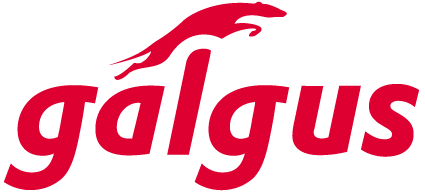Beyond providing connectivity, WiFi networks have the ability to track the location of devices. This enables managers to make more informed decisions about their asset management, minimising risks and costs and increasing efficiency and profits. Here are 5 sectors that are achieving this.
In addition to all the above benefits, WiFi Location Analytics makes it possible to identify potential issues before they become major problems. This can help reduce inefficiencies and ensure your assets are operating at peak performance
They can even increase people’s safety. By providing visibility of their location, they make sure to avoid crowds, detect presence in risky areas and other potentially dangerous situations.
5 sectors that have leapfrogged their asset management with WiFi Location Analytics
Retail
The retail sector is one of the sectors that benefits most from the application of WiFi Location Analytics technology. Here, it is used to track the movement of customers and employees, even in real time.
This provides information on peak and off-peak days and times, busiest areas, customer loyalty levels and much more high-value data.
This helps to better understand customer behaviour and optimise shop design, product placement, better distribute employee workloads and shifts… in general, everything needed to improve the customer’s shopping experience.
It can also help improve inventory management processes by providing information on sales trends and product demand.
Find out more by downloading this success story for retailers and supermarkets.
Transport
Nobody can imagine travelling without a WiFi connection for most of their journey. That’s why airlines, railways, bus companies, airports, stations and the like are concerned with providing fast, robust and secure network access.
But in addition to providing a tailored connectivity experience for their users, companies and organisations in the transport sector can derive a lot of value from WiFi location technology.
With the data provided by Location Analytics, it will be possible to know the capacity and passenger flows, segmented by days and hours; to identify the busiest and least busy areas and to allocate staff and resources according to this recorded behaviour.
This will provide improved asset management, which is key in these crowded environments, avoiding long waits at counters, security checkpoints and other critical points.

Hotels
When we talk about WiFi in hotels, the first thing that usually comes to mind is that guests have the best possible connection in the rooms, above all, but also throughout the facilities.
Here it is also important to visualise the hotel as a venue that goes beyond the rooms and WiFi networks as a means of much more than just providing internet connectivity.
In fact, through Location Analytics, managers are able to know, for example, at what times the reception needs extra staff, the times of the day when the restaurant is most crowded, the saturation levels of the swimming pool, etc.
In addition, many hotels will be hosting large events of all kinds, which will bring together a large number of people on a specific stage. Here, too, it is very important to know the capacity and movements in order to provide the best possible service and ensure that they enjoy the experience to the fullest.
You can learn more about all this by downloading our success story of the Barceló Renacimiento Hotel in Seville.
Events
One of the toughest tests a WiFi network can face is how well it responds at large events, where large concentrations of people are looking to connect at the same time, upload multimedia content or do live streaming.
In addition, geolocation WiFi analytics can help to make the organisation of these events a success, whether indoors or outdoors.
It can accurately monitor the capacity of the venue, as well as the movement of people, facilitating the organisers’ decision-making in areas such as the allocation of resources by zones.
More in this video about our work with Real Betis Balompié:
Education
Within educational centres, WiFi Location Analytics solutions provide a complete and accurate view of class sizes, crowds in corridors, in the playground itself… and thus enable the necessary measures to be taken to improve the flow of students and teachers.
It is also possible to see the movement of people around the school and, for example, to observe how it increases at peak times of school entrance and exit due to the presence of parents who come to drop off and pick up their children, respectively.
The latter can be very useful in terms of taking action to avoid traffic chaos in the area and to increase road safety in the area.
Success story: Galgus and the Salesianos School in Seville.
What challenges must be overcome to successfully implement WiFi Location Analytics?
As you can see, there are many advantages to deploying a WiFi Location Analytics solution in a multitude of scenarios. However, there are a number of technical aspects to consider in order to obtain the expected results and not end up being a disappointment.
Some of them go hand in hand with the accuracy of the information presented. Here it is essential to include devices that are not connected to our own WiFi network in the count and geolocation.

On the other hand, there is the issue of the frequent changing of random MAC addresses by today’s devices. If the effect of this is not mitigated, we will be counting many more devices than there actually are, and it will be impossible to trace them.
Last but not least, there is the investment required in terms of the number of access points needed to have a WiFi Location Analytics tool that is up to the task.
Galgus technology has the ability to include connected and non-connected devices in its Location Analytics solution and to minimise distortions due to MAC address randomisation.
All this, requiring a low number of access points compared to other alternatives on the market. Minimising costs and optimising ROI.
If you want to know more, if you have any doubts and/or if you want to know how you can apply it to your project, we are eager to hear from you and for you to tell us all the details so that we can give you a hand. Contact us!









